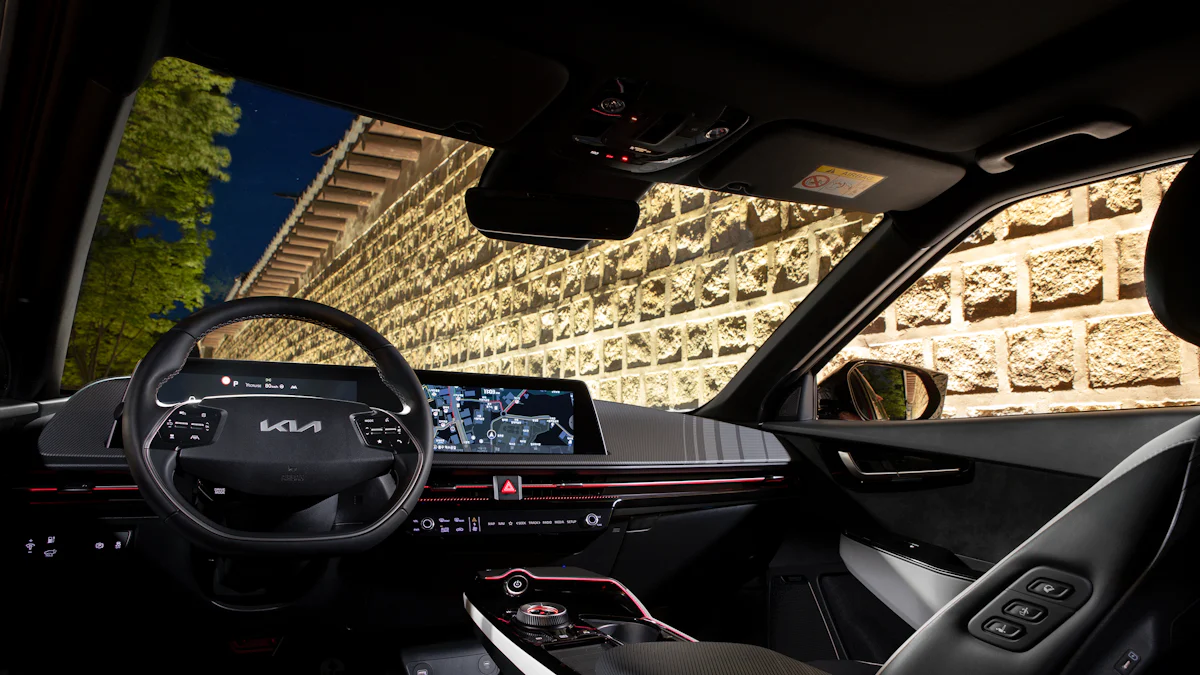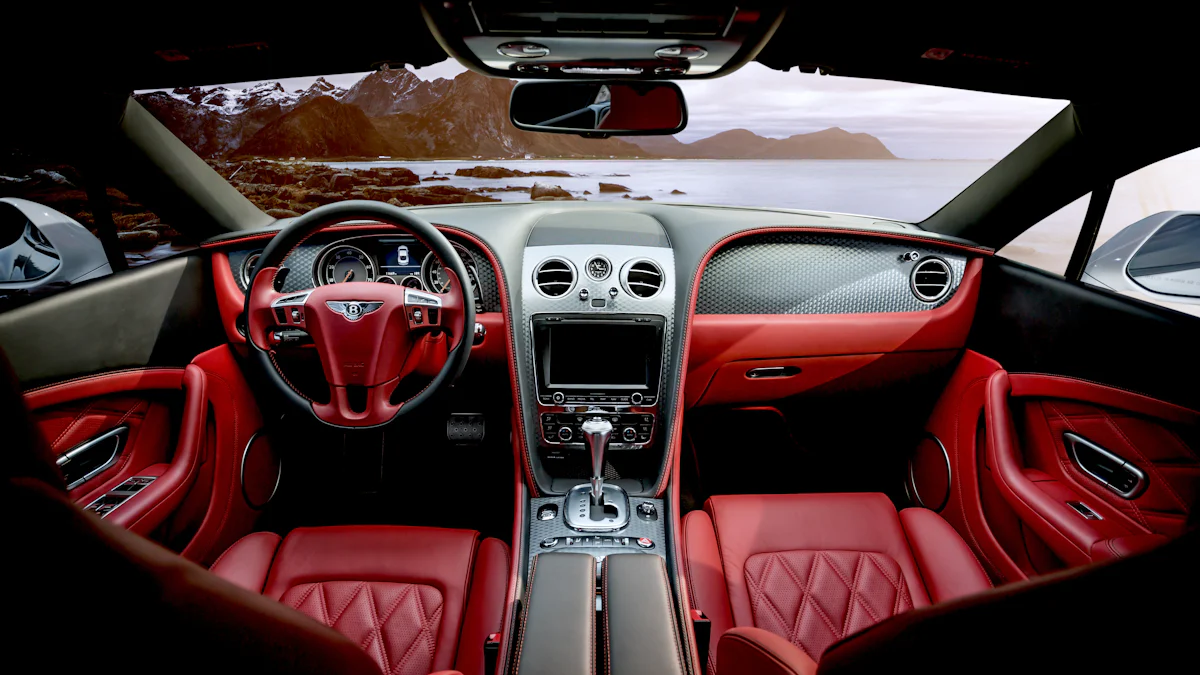
Automotive interior trim plays a vital role in enhancing both the aesthetics and functionality of vehicles. The market for automotive interior trim is experiencing rapid growth, driven by technological advancements and evolving consumer preferences. Consumers now demand greater comfort, advanced technology, and sustainable materials in their vehicle interiors. This shift has led to innovative and aesthetically pleasing trim options that cater to these needs.
Sustainable Materials in Automotive Interior Trim
The automotive industry is increasingly focusing on sustainability. Manufacturers are exploring eco-friendly alternatives to traditional materials. This shift aims to reduce the carbon footprint while providing visually appealing interiors.
Eco-friendly Fabrics
Recycled Materials
Recycled materials are becoming a staple in automotive interior trim. Companies are using recycled plastics, such as PET bottles, to create durable and attractive fabrics. Econyl nylon and yarns are popular choices for seat covers and floor mats. These materials offer both environmental benefits and high performance.
Organic Textiles
Organic textiles are gaining traction in the automotive sector. Manufacturers are opting for organic cotton and wool to create luxurious and sustainable interiors. These materials are free from harmful chemicals and pesticides. The use of organic textiles aligns with the growing consumer demand for eco-friendly products.
Biodegradable Components
Plant-based Plastics
Plant-based plastics are revolutionizing automotive interior trim. These materials are derived from renewable sources like corn and sugarcane. Plant-based plastics offer a sustainable alternative to traditional petroleum-based plastics. They are used in various components, including dashboards and door panels.
Natural Fibers
Natural fibers are another key trend in sustainable automotive interiors. Materials like hemp, flax, and jute are being incorporated into vehicle interiors. These fibers provide strength and durability while being environmentally friendly. Natural fibers also contribute to a unique and aesthetically pleasing interior design.
Advanced Technology Integration in Automotive Interior Trim
The integration of advanced technology in automotive interior trim is transforming vehicle interiors into high-tech environments. This trend enhances both functionality and user experience.
Smart Surfaces
Smart surfaces are revolutionizing automotive interior trim. These surfaces incorporate advanced technologies to provide interactive and intuitive controls.
Touch-sensitive Controls
Touch-sensitive controls are becoming a standard feature in modern vehicles. These controls replace traditional buttons and switches. The use of capacitive touch technology allows for sleek and seamless designs. Drivers can easily adjust settings with a simple touch, enhancing convenience and safety.
Integrated Displays
Integrated displays are another key innovation in automotive interior trim. These displays provide real-time information and entertainment options. High-resolution screens are embedded into dashboards and center consoles. This integration offers a futuristic look and improves the overall driving experience.
Expert Testimony:
“Advanced gesture control, haptic feedback, and augmented reality interfaces are just a few examples of how future automotive interiors will facilitate effortless control and communication,” says Goudsmit, an expert in automotive interior design. “These technologies enable drivers to focus on the road while enjoying the benefits of automation.”
Ambient Lighting
Ambient lighting plays a crucial role in enhancing the aesthetic appeal and comfort of vehicle interiors. This feature allows for personalized and dynamic lighting options.
Customizable LED Lighting
Customizable LED lighting provides endless possibilities for automotive interior trim. Drivers can select from a wide range of colors and brightness levels. This customization creates a unique and personalized atmosphere inside the vehicle. LED lighting also improves visibility and safety during nighttime driving.
Mood Lighting Systems
Mood lighting systems take ambient lighting to the next level. These systems adjust the interior lighting based on the driver’s preferences or driving conditions. Soft, warm lights can create a relaxing environment, while bright, cool lights can enhance alertness. Mood lighting systems contribute to a more enjoyable and comfortable driving experience.
Expert Testimony:
“From sustainable materials to personalized experiences and advanced connectivity, the automotive interior is evolving to create a harmonious blend of luxury, functionality, and innovation,” states Goudsmit.
The integration of advanced technology in automotive interior trim is not just about aesthetics. It also enhances functionality, safety, and user experience. As these technologies continue to evolve, the future of automotive interiors looks promising.
Luxury and Comfort Enhancements in Automotive Interior Trim

The automotive interior trim market is witnessing a significant shift towards luxury and comfort. Manufacturers are focusing on providing premium materials and ergonomic designs to enhance the driving experience.
Premium Upholstery
Premium upholstery plays a crucial role in elevating the interior ambiance of vehicles. The use of high-quality materials ensures both durability and aesthetic appeal.
Leather Alternatives
Leather alternatives are gaining popularity in the automotive industry. Materials such as Alcantara and synthetic leathers offer a luxurious feel without compromising on sustainability. These alternatives provide the same level of comfort and elegance as traditional leather. Many luxury car brands are incorporating these materials to meet the growing demand for eco-friendly options.
High-end Fabrics
High-end fabrics are another key trend in automotive interior trim. Fabrics like suede, velvet, and premium textiles add a touch of sophistication to vehicle interiors. These materials not only enhance the visual appeal but also provide superior comfort. The use of high-end fabrics reflects the brand’s commitment to quality and luxury.
Ergonomic Design
Ergonomic design focuses on creating a comfortable and user-friendly environment inside the vehicle. This approach ensures that every element of the interior trim contributes to a pleasant driving experience.
Adjustable Seating
Adjustable seating is a vital component of ergonomic design in automotive interiors. Modern vehicles feature seats with multiple adjustment options, including lumbar support and memory settings. These features allow drivers and passengers to find their ideal seating position, reducing fatigue during long journeys. The Lexus LX 600, for example, offers handcrafted leather seating with advanced adjustability options.
Enhanced Support Features
Enhanced support features further improve the comfort of automotive interior trim. Seats with built-in massage functions, heating, and cooling capabilities provide a spa-like experience on the road. These features cater to the needs of drivers and passengers, ensuring maximum comfort. The integration of state-of-the-art technology, such as the Mark Levinson sound system in the Lexus LX 600, enhances the overall driving experience.
Product Information:
- Lexus LX 600: Handcrafted leather seating, Shimamoku wood accents, ambient lighting, 12.3-inch touchscreen display, Mark Levinson sound system.
The focus on luxury and comfort in automotive interior trim is transforming the way people perceive vehicle interiors. The combination of premium upholstery and ergonomic design sets new standards for what defines a truly luxurious driving experience.
Customization and Personalization in Automotive Interior Trim
The demand for customization and personalization in automotive interior trim continues to rise. Consumers seek unique and tailored experiences that reflect individual preferences and lifestyles.
Modular Interior Designs
Modular interior designs offer flexibility and adaptability. These designs allow for easy modifications and upgrades.
Interchangeable Components
Interchangeable components provide a versatile approach to automotive interiors. Drivers can swap out parts like seat covers, dashboard panels, and door trims. This flexibility enables quick updates to match changing tastes or needs. The ability to customize interiors without significant investment appeals to many car owners.
User-specific Configurations
User-specific configurations cater to individual preferences. Drivers can adjust seating arrangements, storage solutions, and control layouts. This level of personalization enhances comfort and convenience. Automakers recognize the value of offering customizable options to meet diverse consumer demands.
Color and Finish Options
Color and finish options play a crucial role in personalizing vehicle interiors. A wide range of choices allows for unique and expressive designs.
Bespoke Color Palettes
Bespoke color palettes enable car owners to select specific hues. These palettes can match personal style or brand identity. Custom colors create a distinct and memorable interior environment. Many luxury brands offer bespoke color services to cater to discerning customers.
Unique Textures and Patterns
Unique textures and patterns add depth and character to automotive interiors. Materials like brushed metal, carbon fiber, and wood veneers provide varied tactile experiences. These elements contribute to a sophisticated and personalized look. Automakers continue to innovate with new textures and patterns to enhance interior aesthetics.
Survey Results:
- 71% of automotive executives expect vehicle interiors to become more important.
- 42% of car buyers in the U.S. are willing to pay extra for customizable interior features.
The growing trend of customization in car interiors reflects a shift in consumer priorities. Personalization enhances the driving experience and adds value to vehicles. Automakers must continue to innovate and offer customizable options to stay competitive in the evolving market.
Staying updated with the latest trends in automotive interior trim remains crucial for both consumers and manufacturers. These trends significantly impact consumer satisfaction and market competitiveness. The integration of sustainable materials, advanced technology, luxury enhancements, and customization options shapes the future of vehicle interiors.
Automakers: “Offering a range of customizable options, from colors and materials to stitching patterns and embossed logos, allows consumers to tailor their vehicle interiors to their preferences.”
Considering these trends in future vehicle designs or purchases enhances the driving experience and aligns with evolving consumer demands.
Post time: Jul-27-2024



